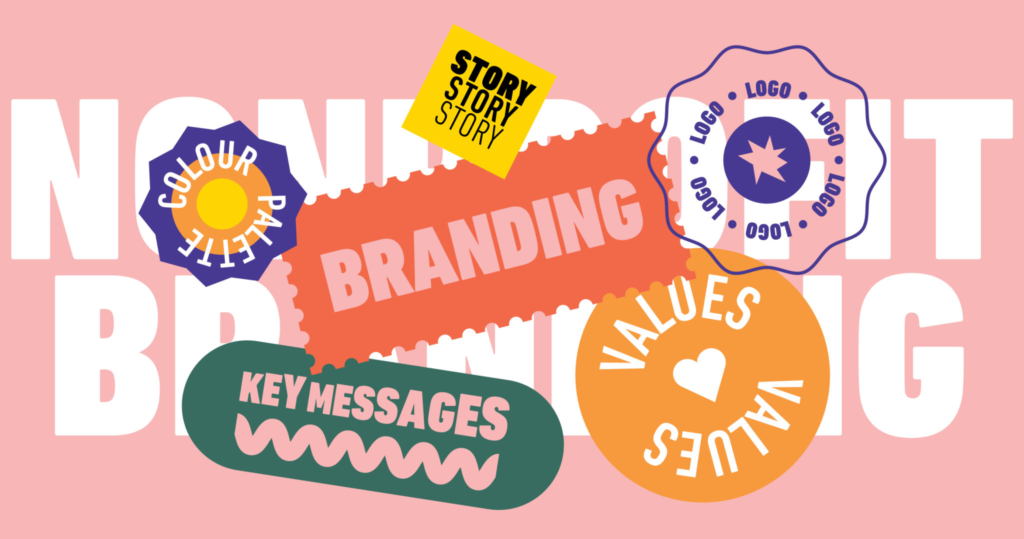You’ve created a great product or service. Now, how do you craft a brand identity that will help you stand out? Creating a strong and recognizable brand is key to success. It’s an opportunity to communicate who you are and what your company stands for. It’s also an opportunity to tell your story and create an emotional connection with your customers.
Brand identity is not just about creating logos and designing websites, it’s about crafting a comprehensive experience for your customers – one that ties together all touchpoints with your brand from initial awareness and contact through conversion, loyalty and advocacy.
In this article, we’ll explore the key elements of brand identity and how you can use them to create a unique experience for your customers that will help you stand out in the crowded marketplace.
What Is the Meaning of Brand Identity?

A brand identity is the impression your company leaves with its customers. It’s the core of your business and reflects the ideas, values, personality, and culture that make up your brand. Your brand identity should be distinct and recognizable, helping you stand out from the competition.
Creating a strong brand identity is essential to any business’s success. An effective brand identity will help to create an emotional connection between a business and its customers, allowing customers to identify with the company more easily. It can also help to increase customer loyalty and trust in your brand—so that when it comes time for them to buy again, they remember you first.
The goal of crafting a brand identity is to find a balance between making sure your message is clear and memorable—while also making it stand out from similar companies in an impactful way. To do this, you need to define who you are as a business: What do you offer? Who’s your target audience? What are your goals? What makes you unique? Answering these questions will help you clearly define what sets your company apart from others in the market—and give you the foundation for creating an effective brand identity strategy.
Identifying Your Brand’s Purpose
Your brand identity is more than just an outward representation of your company. It’s also a reflection of your mission and purpose. As you consider how to craft your brand identity, think about what makes it unique, what job you’re helping it do better than anyone else, and the core values that you want to express. Doing so will help you develop the foundation for the story you want to tell your customers and the type of impression you want to make.
When identifying your purpose, be sure to keep in mind how you want customers to perceive your brand:
- Is it a youth-oriented, cutting-edge company or something more timeless or traditional?
- Are you providing something practical or simply creating something fun or enjoyable?
- What does success look like for your company?
By knowing and communicating the essence of your brand’s purpose, whether it’s related to products, services, values, or some combination of them all, you can ensure consistency among all of your branding materials and create an unmistakable presence in the industry.
Creating Your Brand Identity

Your brand identity is what will help distinguish you from your competition and give customers an idea of what to expect from your company. To create your brand identity, you must answer some questions about the look, feel, and messaging of your business.
What Is Your Mission?
Start by defining your mission – this could be anything from providing top-notch customer service to creating eco-friendly products. Knowing and understanding your mission will help you develop a message that resonates with potential customers.
Who Is Your Audience?
Understanding who you are talking to will also help when crafting your message – different types of products might speak to different audiences and understanding who they are can help create content tailored to them.
What Does Your Brand Stand For?
Finally, consider what values and qualities you want associated with your brand. This could be anything from trustworthiness to innovation – whatever it is that you want to convey about yourself should be included in your messaging. Having these key points in mind when crafting your message will create an identity that is unique and helps set you apart from the competition.
Designing Your Brand’s Visual Identity

Your brand’s visual identity is more than just a logo and company colors. It’s the way that you present your products and services to your target audience and the way that customers recognize and identify with you.
Creating a cohesive visual identity involves:
- Creating a Logo: A logo is one of the most powerful tools in any business’s branding arsenal. It should represent your core ideas, mission, and values while being memorable and easily recognizable.
- Developing a Color Palette: Colors evoke emotion, which is why color theory plays an important role in creating a brand identity. Your color palette should create instant recognition of your brand among the people who see it.
- Crafting Fonts: Fonts are essential to creating visual variety in your branding materials, but they must be chosen carefully to ensure consistency across all mediums – digital, print, etc.. To achieve an overall unified look, choose two fonts for body copy (serif for print materials, sans serif for digital content) and one font for headlines/titles.
- Establishing an Image Library: An image library keeps all of your branding assets in one place so that you can quickly access them whenever necessary. This includes logos, color palettes, pattern designs, fonts, photography style guides – anything related to visual branding should be added to the library for easy access later on.
By taking the time to develop each of these elements carefully, you’ll create a visual identity that resonates with customers and sets you apart from competitors – now that’s something worth crafting!
Establishing Your Written Identity

Your brand’s written identity establishes how you communicate with customers and potential customers. This includes everything from how you write emails or blog posts, to your social media posts and website copy.
Establishing a consistent tone of voice and writing style will help to create a recognizable, distinctive voice for your brand. Here are some tips on crafting an identifiable written identity:
- Acknowledge Your Audience: Focus on what matters to your target customer and show that you understand their point of view by regularly responding to customer comments or questions.
- Know Your Competitors: Knowing what content your competitors are creating can help inform the type of content that can set you apart from them. Understanding the competition will give you an idea of what topics should be avoided, as well as potential opportunities that no one has explored yet.
- Make it Accessible: Write in a style that is easy to comprehend, but still able to convey the passion behind your brand values in an authentic way. Use language that appeals to the target demographic—avoid jargon or overly technical terms that might cause confusion for readers outside of your industry.
Nurturing and Growing Your Brand Identity
Your brand identity is more than just a logo – it’s the emotional connection your customers have with your organization. It’s about the values and beliefs you want to convey to the world. It’s also about evoking emotion in your target audience and appealing to their values and beliefs.
Nurturing and growing your brand identity requires careful planning, monitoring, and execution. Here are three key steps you can take:
- Define your core values: A clear definition of the values that drive your company will help to inform the decisions you make and ensure consistency in messaging. Take time to define what makes your company unique, so that it can be reflected in your branding.
- Create a strong visual presence: Your visual presence should reinforce who you are as a brand and communicate to customers why they should trust you. This includes everything from logo design to website design to packaging materials, as well as how it translates across social media platforms.
- Invest in relationships: Building relationships with customers is key for establishing trust and loyalty – something that sets great brands apart from mediocre ones. Investing in relationships through customer service, personalized experiences, or special offers will ensure customers know they can rely on you for ongoing support.
Conclusion
In conclusion, crafting a successful brand identity requires companies to stand out from the competition. It involves identifying the unique qualities a business or product offers and developing a memorable, consistent story around it. Additionally, a brand identity must be easily recognizable and relatable, with an attractive visual appearance.
Not every company will be successful in establishing a brand identity. But by researching competitors, identifying target audiences and determining what makes a business stand out, companies can increase their chances of success. With an effective brand identity, businesses can better engage their customers, establish trust, and ultimately increase their competitive advantage.

